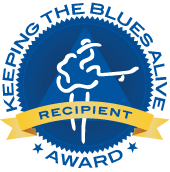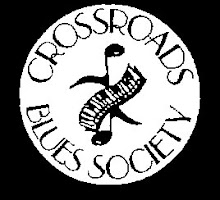Soul of the Man
Biography of Bobby “Blue” Bland
Charles Farley
University Press of Mississippi
263 pages
Back in the mid-1960's, I started digging into the history of blues music. There were a few books on the subject and not much else. Magazines devoted to the music, like Living Blues, were still years from start-up. One publication that provided a wealth of information was Hit Parader. Every issue had a column that had popular musicians list their favorite recordings. One name that kept getting mentioned was singer Bobby “Blue” Bland and his Two Steps From the Blues record. On one of my regular trips to the Jazz Record Mart in Chicago, I was able to purchase a copy and once I had a chance to listen to this classic recording, Bland became one of my favorite singers.
Author Charles Farley takes an in depth look at Bland's career, from its start in talent shows and clubs in Memphis to stages all over the world. All Bobby ever wanted to do was sing – and thankfully he was blessed with a rich, expressive voice that easily captivated listeners. Bland's formal education never went further than the third grade level. He was also shy by nature until he hit the stage, where he was entirely at home belting out one of his sixty-three R&B hits.
Memphis in the early 1950's was a musical hotbed, with Bland trying to carve a niche for himself at the same time that B.B. King and Junior Parker were reaching for the spotlight. Bland and King quickly started a friendship that endured over the years, even recording a live-in-the-studio set together in 1974.
At the age of twenty-two, Bland signed a recording contract with the brand new Duke label, owned by David Mattis, the program director for WDIA radio in Memphis. Mattis soon took on a partner, the infamous Don Robey, to get additional cash for his label. Robey had a number of interests in Houston, TX where he ran a big club as well as the Peacock record label, one of a handful of black-owned labels. Robey soon bought out Mattis and together with his business manager, Evelyn Johnson, they began to search for that elusive hit record. They signed Bland to a contract and cut several records that failed to make much noise.
After a stint in the U.S. Army, Bland returned to Memphis only to find out that the Duke operations were now based in Houston. Once there, Bland was set-up for a session that yielded his first modest hit, “It's My Life, Baby”. In 1957, Bland scored a #1 hit on the Billboard R&B charts with his classic version of Joe Medwick's “Farther Up the Road”, with Pat Hare contributing a taut guitar solo. Robey surrounded Bland with the best musicians available. Hare was one of many guitar greats that helped define Bland's patented sound – Wayne Bennett, Mel Brown, Clarence Holliman, Texas Johnny Brown, Roy Gaines and Matt “Guitar” Murphy. Many of his horn players and drummers would often leave, recruited for slots in the bands of James Brown or B.B. King.
Robey packaged Bland with Junior Parker for a killer live combination that filled clubs throughout the country. Once Bland began working with trumpeter Joe Scott, he started generating hits on a regular basis. Scott was a skilled arranger and he tailored songs to Bland's strengths as well as those of the backing musicians. Many feel that Bland's success was a product of Scott's ability to pick the right songs and then add dramatic flourishes that highlighted Bland's voice. Scott would also stand next to Bland in the studio, teaching him the lyrics to a new song by whispering them in the singer's ear.
Bland admired singers like Tony Bennett and Nat “King” Cole in addition to being fond of country music. His vocal style mixed soul-wrenching intensity with a smooth voice that displayed none of the usual rough edges that were common on blues records of that era. Bland did have one unique characteristic, what the author refers to as a “squall” - a throaty exclamation that the singer felt distinguished him from other vocalists. Bland also had a great appreciation for T-Bone Walker. At one session, Bland cut the gigantic hit “Turn on Your Love Light” and then decided to attempt one of Walker's tunes. After hastily working out an arrangement with the band, Bland turned what was a “throw-away” track into a classic rendition of “Stormy Monday Blues”. The team of Bland and Scott mixed blues elements with big band arrangements to create an updated sound that was equally pleasing to listeners from rural areas to big city environments.
Bland's limited education left him ill-equipped to handle the business aspects of his career. He relied on Robey and especially Johnson to take care of his affairs. He had simple tastes – he was interested in singing, booze and women. Since he didn't write his own songs, he did not earn a lot from all of his hit records. In order to generate income sufficient to support Bland and his large band, they spent decades doing more than 300 shows a year in small honky-tonks to large, lavish clubs. Bland was not a dynamic stage performer – he simply stood there and dazzled audiences with his soul-wrenching vocals.
When the blues revival started, fueled by a generation of white listeners, Bland seemed to get overlooked. The author speculates that may be due to Bland not playing an instrument at a time when guitar rose to prominence. Still, Bland was able to continue working due to his standing in the African-American community. He enjoyed two career resurgences, one with the ABC-Dunhill Records and later with Malaco Records.
Farley did extensive research for this book, as witnessed by the ten pages of sources that are listed. He also includes brief biographies of many of the musicians that were a key part of Bland's success. It all adds up to a fascinating look at a man whose influence on modern blues has been under-appreciated for too long. Hopefully Farley's biography will help rekindle interest in the all of the outstanding music that defines Bobby “Blue” Bland's legacy.
Reviewed by Mark Thompson







No comments:
Post a Comment